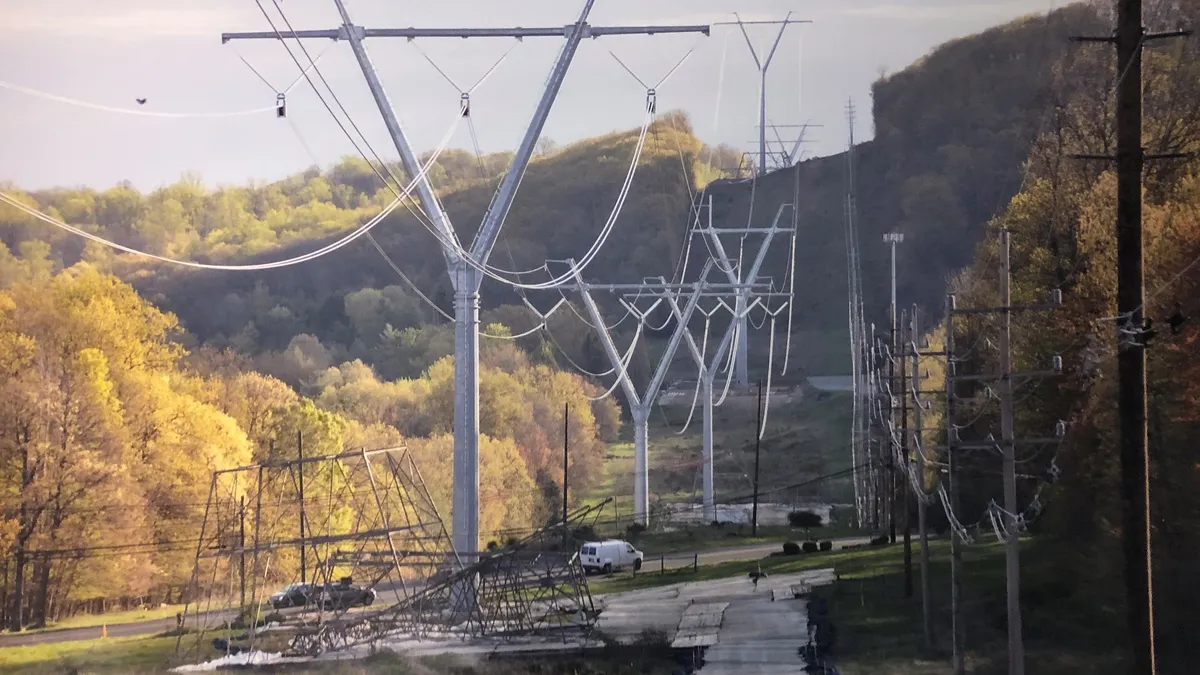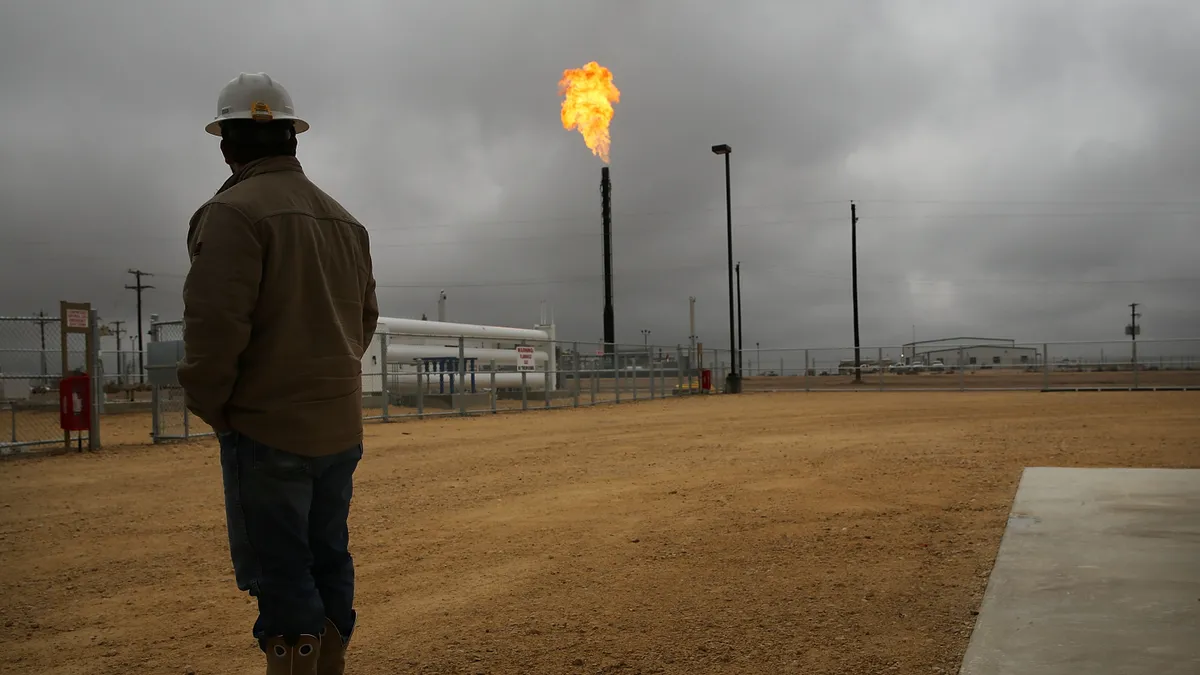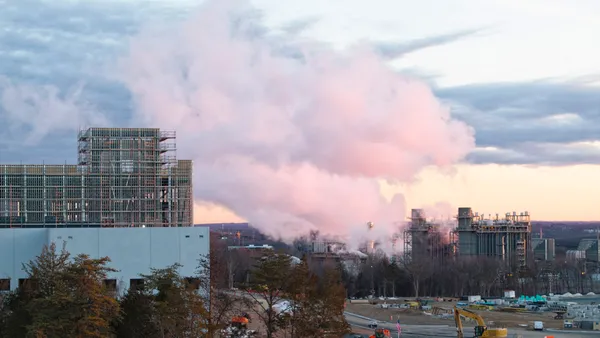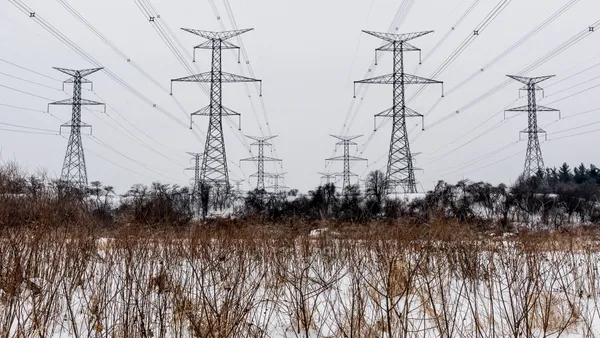Dive Brief:
- Public Service Electric and Gas agreed to pay $6.6 million to settle allegations it gave the PJM Interconnection inaccurate information about a $546 million transmission project during the grid operator’s Regional Transmission Expansion Plan process, according to a settlement approved by the Federal Energy Regulatory Commission on Thursday.
- FERC enforcement office staff found that PSE&G violated agency rules requiring market participants to provide “accurate and factual information” about the state of power line towers in communications with agency-approved regional transmission organizations and others. PSE&G didn’t admit or deny the alleged violations.
- PSE&G’s $6.6 million fine amounts to “a modest reduction” in its return on equity for the local project, according to Ari Peskoe, director of the Electricity Law Initiative at Harvard Law School. “It’s barely a penalty for what remains a highly profitable investment,” Peskoe said in an email. “The proceeding illustrates that no one is checking utilities’ work on local transmission projects.”
Dive Insight:
The settlement agreement comes amid growing scrutiny of local transmission projects — called supplemental projects in PJM — that receive little regulatory oversight, according to ratepayer advocates and others.
PJM transmission owners are increasingly building supplemental projects, which are designed to address local reliability needs, according to an RMI report released last month. The projects receive scant oversight from regional grid operators or state and federal regulators, the group contends.
The settlement agreement centers on a $546 million project PSE&G, a Public Service Enterprise Group utility subsidiary, recommended to PJM in 2017 to replace a transmission line in the Roseland-to-Pleasant Valley corridor in New Jersey, according to FERC’s decision. The RPV line included 264 steel lattice transmission towers supporting a 50-mile, 230-kV line. Almost 90% of the towers were built between 1927 and 1930, according to FERC.
Before it was rebuilt, the RPV line was one of the oldest lines on PJM’s system, William Smith a PSE&G spokesman said Friday in an email.
“While FERC’s review found that there were inaccuracies in materials that were provided to PJM as part of the approval process, FERC does not challenge the end of life determination that determined the need to rebuild the RPV line to ensure reliability and system benefits such as enhanced capacity,” Smith said. “We have worked cooperatively with FERC in their review and have implemented processes to ensure such issues do not arise again.”
In presentations to PJM staff on the project, PSE&G said a consultant found that 67 towers needed “extensive foundation rehabilitation” when the consultant had determined only eight towers required that work, according to FERC.
PSE&G also told PJM the consultant found that 144 towers on two circuits exceeded 95% loading capability and 129 towers exceeded 100% loading capacity, according to FERC. However, PSE&G told the consultant to assume when making its calculations of loading capability that all towers had 10% steel loss due to corrosion, FERC said. But that amount of steel loss was not observed in the field by PSE&G or its consultants, according to FERC.
Without the assumption on steel loss, the consultant found only 75 towers exceeding 95% loading capability and none exceeding 100% loading capability, according to FERC.
PSE&G provided PJM consultant reports and report excerpts and data about the towers’ condition, according to FERC. However, PSE&G didn’t provide PJM staff with consultant reports or sections of reports that would have made clear the more limited scope of their findings on the towers’ condition, FERC said.
The consultant’s checklists reporting on field inspections of towers on the two circuits would have informed PJM directly that towers on those circuits were in the same or comparable condition to towers on other circuits that the consultant “found ... in fairly good condition,” FERC said.
“The subject of potential repairs and information about the cost to address, through repairs, the steel lattice tower conditions assessed by PSE&G’s external consultants was not a subject addressed in PSE&G’s PowerPoints presented to PJM,” FERC said, noting that PJM doesn’t require transmission owners to specify repair costs.
“FERC’s investigation reveals that PSE&G concealed information from PJM … and failed to disclose its methodology to PJM stakeholders, which makes its presentation highly misleading,” Harvard’s Peskoe said.
PJM approved the project in April 2018 and PSE&G brought it into service in May 2023. The new RPV line will provide reliability and system benefits, partly by “greatly increasing” its capacity and by providing the capability to string a second circuit, FERC said. Its enforcement office didn’t challenge PSE&G’s finding that the RPV line had reached its end-of-life, the agency said.
In response to FERC’s investigation, PSE&G took steps to improve its documentation process for local transmission projects, according to FERC.














